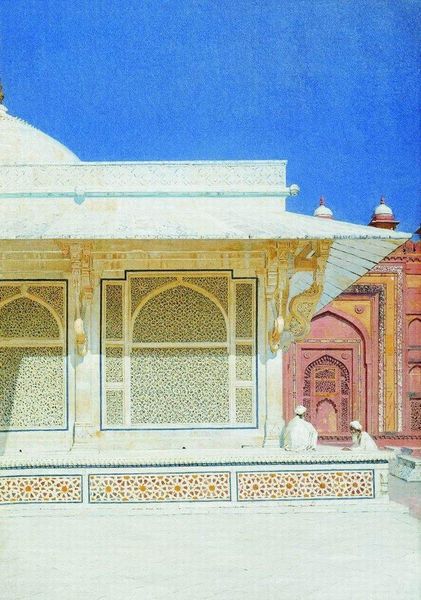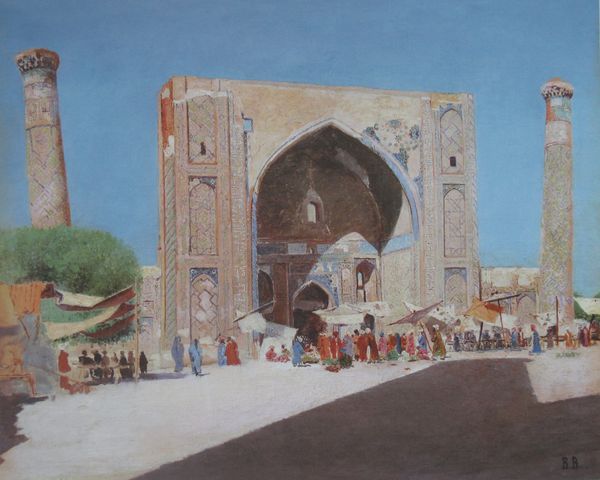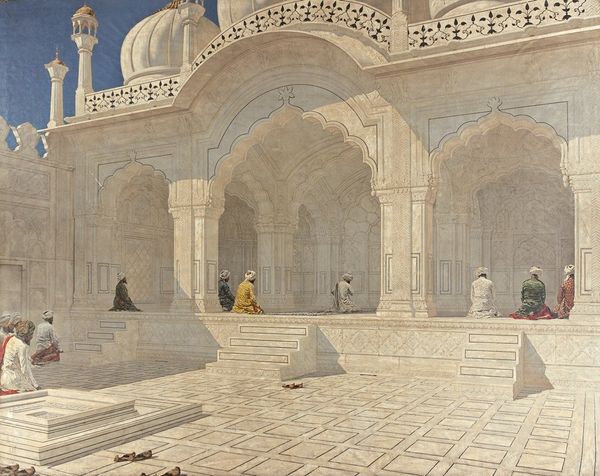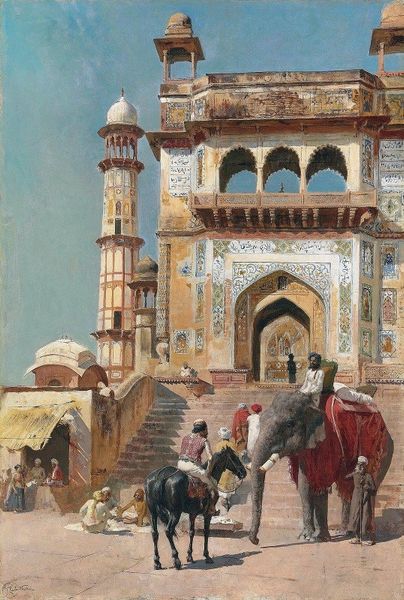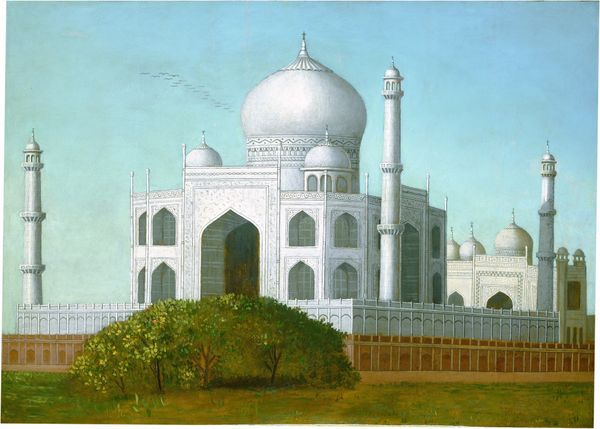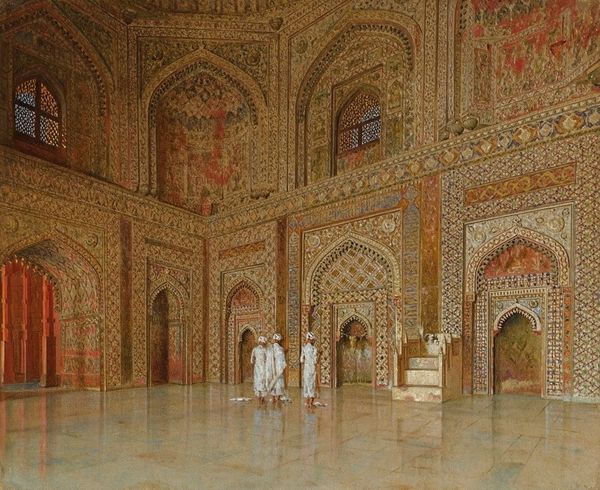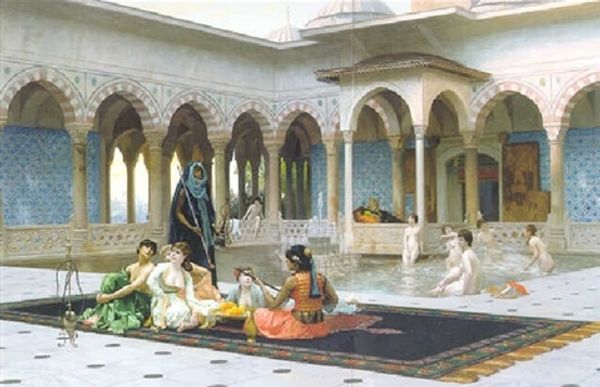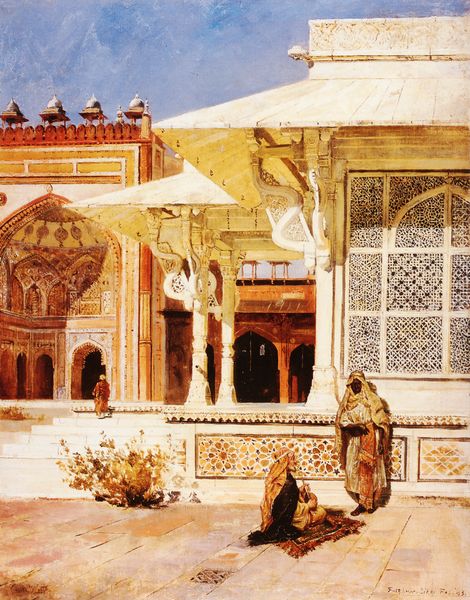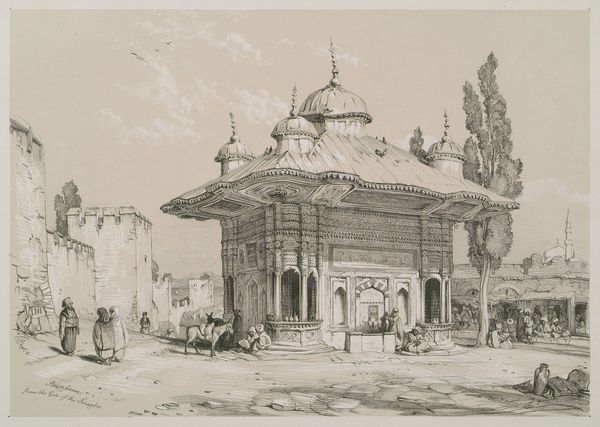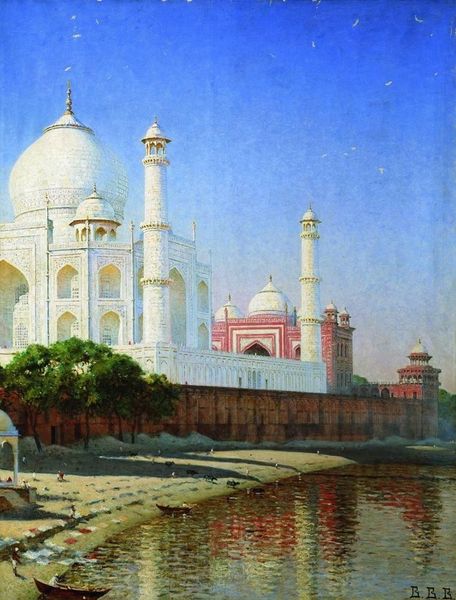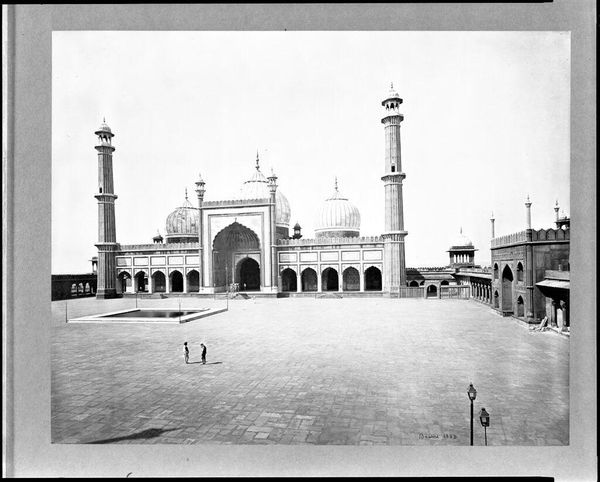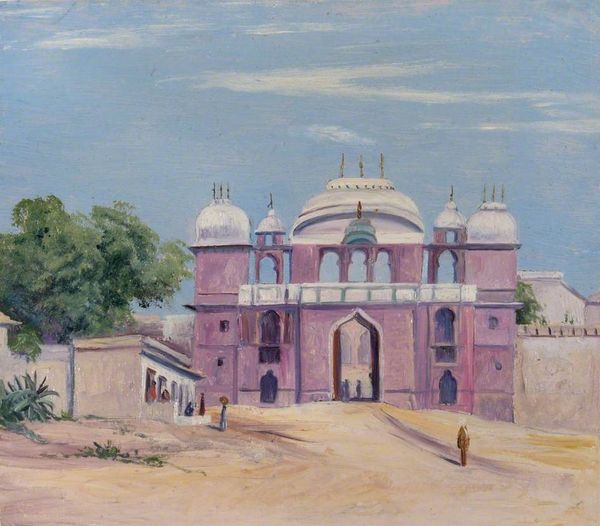
Throne Hall of the Great Mughal Shah Jahan and Aurang-Zeb in Delhi Fort 1875
0:00
0:00
painting, oil-paint, watercolor, mural
#
painting
#
oil-paint
#
landscape
#
perspective
#
oil painting
#
watercolor
#
geometric
#
orientalism
#
islamic-art
#
history-painting
#
academic-art
#
mural
#
watercolor
#
realism
#
building
Copyright: Public domain
Curator: This striking piece by Vasily Vereshchagin, painted in 1875, captures the "Throne Hall of the Great Mughal Shah Jahan and Aurang-Zeb in Delhi Fort." What are your immediate thoughts? Editor: My first impression is its ethereal quality. The crisp, white architecture against that pure, unadulterated blue evokes a sense of calm and immense space. It is beautiful, but also curiously sterile. Curator: I see your point. The formal architectural elements are meticulously rendered. Consider how the geometric precision of the arches and pillars creates a rigid structure and rhythm across the plane. This strict adherence to form results in this sense of calculated order. Editor: Precisely. And considering Vereshchagin's oeuvre, and particularly his experiences documenting military campaigns, it's impossible to ignore the labor embedded in these structures. One wonders about the exploitation of resources and the skilled, but probably unnamed, craftsmen responsible for the elaborate carvings. It reminds us that beauty is rarely without its cost. Curator: Absolutely, this palace signifies not just beauty, but also immense power dynamics, and that connects to the purpose behind its architectural language. Looking at the repeated arch motif, the painting clearly communicates concepts of imperial grandeur. But you’ve turned my mind to material questions too. I am very interested in understanding the material translation that might be going on, for instance, in how paint represents and emulates marble and stone. Editor: Exactly, the material history is vital. It raises a question: what political narratives do paintings like these obscure or subtly propagate through their depiction of such monumental structures? Curator: It’s a poignant consideration. Vereshchagin provides us with this detailed portrayal of power, yet through the structure of its formal construction the real story might involve considering the conditions of labour of its construction. Editor: This discussion offers a deeper appreciation of the artwork’s complexity. Curator: Indeed. Examining both the composition and the context expands our perception beyond mere aesthetics.
Comments
No comments
Be the first to comment and join the conversation on the ultimate creative platform.
